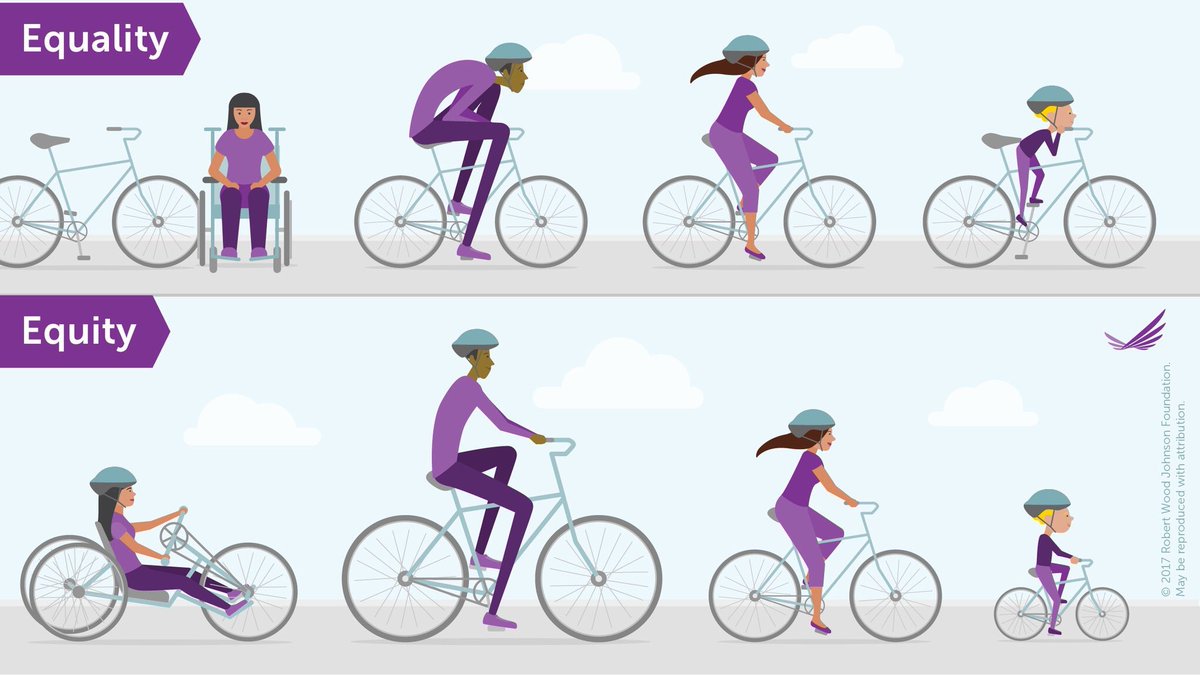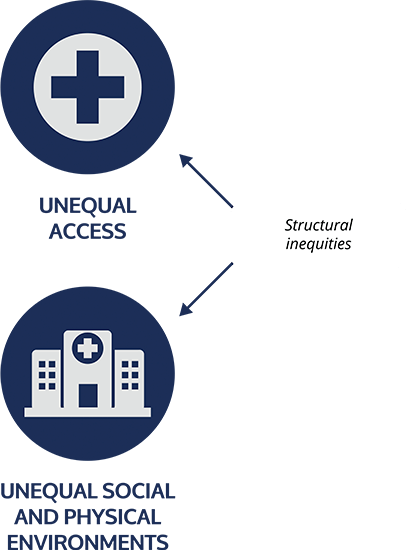Equity
What is Health Equity?

Health inequities are often discussed through the lens of race/ethnicity. However, both unequal treatment (health care disparities) and unequal outcomes (health disparities) can occur across many dimensions including socioeconomic status, age, geography (neighborhood), gender, disability status, or sexual orientation.1Foundation KF. Disparities in Health and Health Care: Five Key Questions and Answers | The Henry J. Kaiser Family Foundation. 2012;2015.2Nelson AR, Smedley BD, Stith AY. Unequal Treatment:: Confronting Racial and Ethnic Disparities in Health Care (full printed version). National Academies Press; 2002.
To achieve equity in health, we must ensure we deliver the same high-quality care to all patients but recognize that we may have to customize our services and address factors outside of the health care system to best meet the needs of all patient populations. This means working to remove barriers to health that stem from structural inequalities rooted in our society, transforming systems of care to be responsive to individual needs, and addressing individual and institutional bias that impact health care delivery.
Why Advance Health Equity?


Where to Start to Advance Equity
Whether we are aware of it or not, we are impacting equity. Any effort that improves the quality, safety, or experience of health care delivery for patients or the overall health of a population can result in one of three equity outcomes. If a baseline disparity or difference in care quality or health outcomes between two populations exist, any performance improvement intervention may either widen that disparity, sustain that disparity, or reduce/eliminate that disparity.
Understanding this concept and ensuring we measure differences by populations before and after any intervention is paramount to advancing equity.
Rethinking Quality with an Equity Lens
Non-marginalized group

Disparities Widen
Smoking cessation
Obesity prevention
Reduction in Breast Cancer mortality

Disparities Sustained
Primary care redesign

Disparities Reduced/
Eliminated
Pediatric injury prevention
Default water heater setting
Aspirin for Heart Attacks in Hospitals
“Health equity is about providing the right care, for the right patient, with the right set of providers at the right time.”
– Eve Higginbotham, SM, MD, Vice Dean for Inclusion and Diversity of the Perelman School of Medicine at the University of Pennsylvania
What You Can Do

Recognize and understand why different populations experience differences in health care quality and work to minimize their impact.

Recognize and understand why different populations experience differences in health outcomes and learn more about how to advance equity.

 Search
Search









